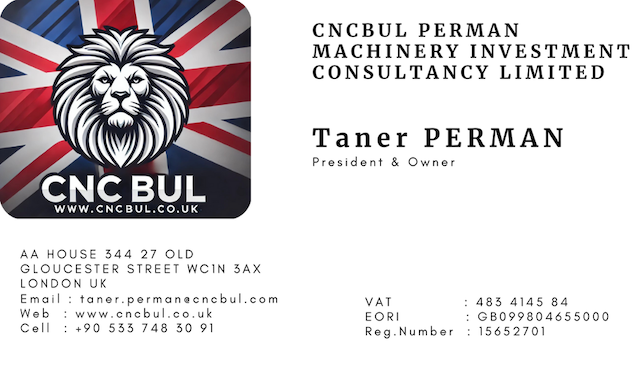I am a second-hand / used machine dealer. How should I have a place to stock and display my machines?
Setting Up a Facility to Stock and Display Second-Hand / Used Machines
As a dealer in second-hand or used machines, creating an optimal environment for stocking and displaying your inventory is crucial for attracting customers and ensuring smooth operations. This article provides a comprehensive guide on how to set up a facility that is both functional and appealing to potential buyers.
1. Location and Accessibility
a. Strategic Location
- Proximity to Industrial Areas: Choose a location near industrial zones where potential customers are likely to operate. This increases visibility and convenience for clients who may need immediate access to machinery.
- Transportation Links: Ensure your facility is easily accessible via major highways and roads to facilitate the transportation of large machines. Proximity to ports or railways can also be advantageous for international clients.
b. Visibility and Signage
- Prominent Signage: Use clear and professional signage to make your facility easily identifiable. Signage should be visible from the road and include your business name and contact information.
- Online Presence: Maintain an updated online presence with detailed directions and virtual tours of your facility to attract remote customers.
2. Facility Layout and Design
a. Space Allocation
- Warehouse Area: Allocate sufficient space for a warehouse to store machines that are not on display. This area should be organized and allow for easy access to machines.
- Display Area: Designate a spacious and well-lit area for displaying machines. This space should mimic a showroom, with machines arranged in a way that allows customers to inspect them easily.
b. Organization and Accessibility
- Aisles and Pathways: Create wide aisles and clear pathways between machines to ensure safety and accessibility. This layout allows forklifts and other handling equipment to move freely.
- Zoning: Organize machines by category, such as milling machines, lathes, and grinders. This makes it easier for customers to find what they are looking for and enhances the overall shopping experience.
c. Safety and Compliance
- Safety Measures: Implement safety measures such as clear signage, protective barriers, and proper lighting. Ensure that machines are secured and stable to prevent accidents.
- Regulatory Compliance: Ensure that your facility complies with local zoning laws, building codes, and safety regulations. This includes fire safety measures and proper ventilation.
3. Storage Solutions
a. Shelving and Racking
- Heavy-Duty Shelving: Use heavy-duty shelving and racking systems that can support the weight of heavy machinery. Adjustable racks allow for flexibility in storing different sizes of machines.
- Pallet Racks: Consider using pallet racks for easier handling and organization of smaller machines and parts.
b. Climate Control
- Temperature and Humidity Control: Maintain a controlled environment to prevent rust and deterioration of machines. This is particularly important for precision equipment and electronic components.
- Dust and Debris Management: Implement dust control measures to keep machines clean and ready for demonstration. This includes regular cleaning schedules and air filtration systems.
4. Display and Presentation
a. Machine Preparation
- Clean and Refurbish: Ensure that all machines are cleaned and, if necessary, refurbished before display. This enhances their appearance and functionality, making them more attractive to buyers.
- Detailed Information: Provide detailed information on each machine, including specifications, operating conditions, and history of use. Attach information sheets to each machine or use digital displays for a modern touch.
b. Demonstration Capabilities
- Operational Demonstrations: Set up a demonstration area where customers can see machines in operation. This helps them understand the functionality and performance of the machines.
- Technical Support: Have knowledgeable staff available to answer technical questions and demonstrate machine capabilities. Offering hands-on demonstrations can significantly influence purchasing decisions.
5. Customer Experience
a. Welcoming Environment
- Reception Area: Create a welcoming reception area where customers can wait and receive information. Provide seating, refreshments, and reading materials related to the industry.
- Customer Service: Train staff to provide excellent customer service, from the initial greeting to after-sales support. A positive customer experience can lead to repeat business and referrals.
b. Additional Services
- Financing Options: Offer financing options to make it easier for customers to purchase machines. Partner with financial institutions to provide competitive rates and flexible terms.
- Logistics and Installation: Provide logistics and installation services to help customers transport and set up their machines. This can be a significant value-added service that differentiates you from competitors.
6. Marketing and Outreach
a. Digital Marketing
- Website and Online Listings: Maintain an updated website with detailed listings of available machines, including photos, videos, and specifications. Use SEO strategies to attract organic traffic.
- Social Media: Leverage social media platforms to showcase new arrivals, promotions, and success stories. Engage with your audience through regular posts and interactive content.
b. Industry Networking
- Trade Shows and Events: Participate in industry trade shows and events to showcase your inventory and network with potential customers. These events provide valuable exposure and opportunities to demonstrate machines in person.
- Partnerships: Establish partnerships with manufacturers, suppliers, and industry organizations to expand your reach and credibility.
Conclusion
Setting up a facility to stock and display second-hand or used machines requires careful planning and attention to detail. By focusing on location, facility layout, storage solutions, display presentation, customer experience, and marketing, you can create an environment that attracts customers and facilitates successful sales. Investing in these areas will not only enhance your operations but also build a strong reputation in the industry, leading to long-term success.

